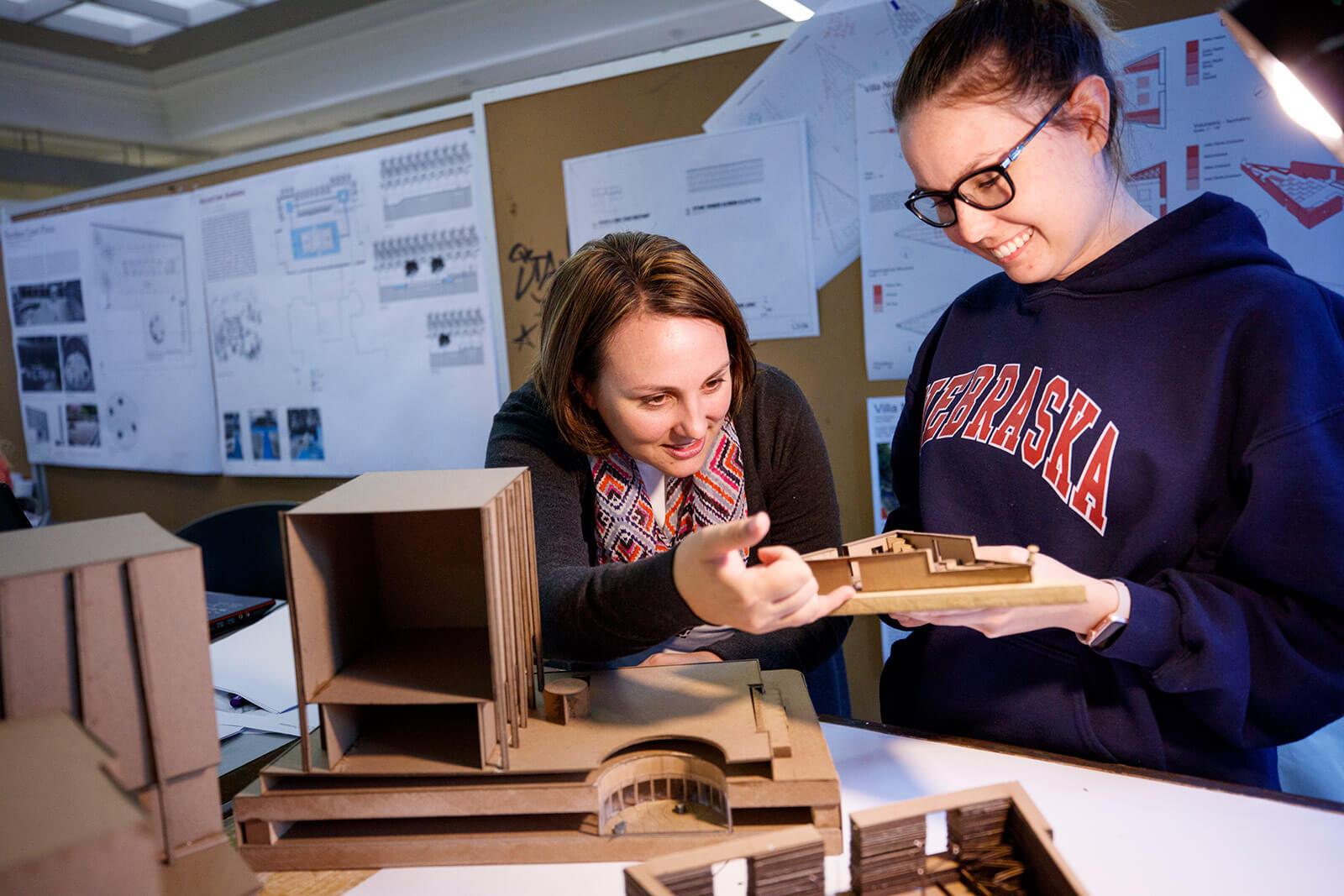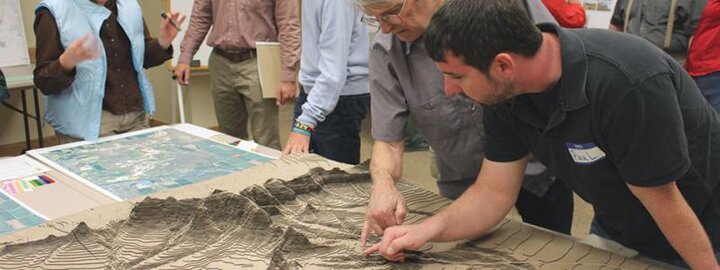Landscape Architecture Program
Our Landscape Architecture Program seeks to expand the boundaries of landscape architecture through interdisciplinary thinking and creative practice.

Landscape architects provide sustainable solutions, support active lifestyle, design transportation solutions, assist in historic preservation and manage water resources. We help families, communities and businesses address important local, regional and national priorities.
Program Description
The Landscape Architecture Program is fully accredited by the Landscape Architecture Accreditation Board and is the only four-year accredited program in a four-state region. This program also offers the only collaborative interdisciplinary approach with the allied disciplines of architecture, interior design and planning. Plus, the landscape architecture profession joins the list of U.S. Department of Homeland Security designated STEM disciplines.
Landscape architecture combines art and environmental sciences. Landscape architects design exterior spaces and places. Those less familiar with landscape architecture tend to think of the profession in relatively basic terms, involving plantings around a building or in a park, for example. The reality is quite different; the profession is much broader, richer, and far-reaching. Landscape architects design at many scales, ranging from a tiny roof deck terrace to thousands of acres of National Forest lands; from the private realm of corporate office courtyard to the public realm of a neighborhood park or community plan; from the specialized creation of a healing garden at a hospital to a customized rehabilitation of a native wetlands. The numerous project types, practice types, along with the professional possibilities available to someone with a background in landscape architecture is almost unlimited.
The four-year undergraduate program consists of a common first year of courses shared by students in architecture, interior design, and landscape architecture. This year is followed by two years where students develop discipline-based knowledge and skills focused on site and building, community planning and design, and urban environments. The final year allows for collaborative work with students in architecture, interior design, and planning in research-based studios. Students participate in exploring a broad range of design problems in the studios where they develop design solutions that are presented to practicing professionals and for some projects, actual clients or partners. Students participate in a myriad of opportunities to support learning in the profession including professional electives, seminars, minors, lecture series, and study abroad. Learning about the profession continues in the required internship program where students work in professional design firms for academic credit. The Bachelor of Landscape Architecture degree requires 120-semester credit hours of coursework.
Accreditation: LAAB
The Bachelor of Landscape Architecture program is committed to the transformative power of design. The faculty and students come together in a creative environment combining studio-based teaching and learning, innovative research and creative activity, and community focused service and engagement to enable faculty and graduates to address the synthesis of environmental systems and human need with innovative, collaborative, and interdisciplinary action.
Mission
College
We create a resilient, healthy, and beautiful world, within a diverse and inclusive culture of rigorous inquiry and innovation, united by the transformative power of planning and design.
Program
The mission of the Landscape Architecture Program at the University of Nebraska is to seeks to expand the boundaries of landscape architecture through interdisciplinary thinking and creative practice, emphasizing natural and cultural systems within the Great Plains while maintaining a global perspective.
Vision
Program
Vision
Program
The Landscape Architecture Program at the University of Nebraska To advance excellence in landscape architectural education through praxis, outreach, innovation, and critical thinking, anchored in the ethos of the Great Plains.
Culture
College
Our intellectual environment thrives because of our: diverse perspectives, dynamic close-knit community, and pursuit of meaningful impact
Program
Our multidisciplinary faculty are committed to the role of Landscape Architecture as a vital participant in advancing solutions to the pressing issues of our time open discussion, expectation of excellence, and mutual support for each other.
Values
College
Demand excellence, be courageous, practice empathy, look beyond, inspire impact.
Program
Core Values
o Interconnected Systems: Recognizing the relationship between cultural and natural
systems in shaping the built environment.
o Present Actions, Future Impact: Acknowledging that the future is influenced by today’s
actions.
o Empathetic Leadership: Embracing leadership through empathy.
o Local and Global Perspectives: Bridging local and global understandings.

